
by Sandra Gulland | Mar 20, 2018 | Adventures of a Writing Life, Promotion, The Game of Hope, Work in Process (WIP) |
I’ve been bed-bound for over a week since a minor knee operation to repair a meniscus issue. I’m not going to whine about it! In fact, I’ve discovered that I’m the perfect candidate for this type of life.
On the bed beside me are:
- my Mac Air;
- my Levenger notebook (calendar etc.);
- a Circa notebook fat with my To Do lists;
- another notebook (a Semikolon Mucho Spiral Notebook for the stationery curious), where I’m thinking through The Next Novel;
- a three-ring binder for scene sheets (@ Story Genius), which I’m really using as a support for my mouse pad and mouse);
- my Kindle;
- an iPad;
- and a stack of magazines (The New Yorker, Real Simple, and Bookmarks).
Beside the bed is my walker (required for just a little longer!), a water bottle, clock, and iPhone. Moisturizer, lipstick, post-its, pencil, pen, pills. Snacks, tissue. Basic clutter.
Everything I need, in short, right where I can reach it. The only problem with this rat’s-nest life is that I can’t climb stairs (yet), can’t get up to my office.
But for now, I’m making great use of this time.
Website renovation
With every publication, a writer needs to update his/her website with information about the new book, a new media kit, author events, and a new author portrait throughout.
I didn’t have time to get an author portrait taken this year (I tried a selfie, with poor results), so I’ve used one James Brylowski took of me five years ago.
“Problem is, books are written slowly, and aging happens all of a sudden.” — from a wonderful article: The Agony and the Ecstasy of taking Author Photos.)
Having neglected my website for years, I discovered a number of problems. Fortunately, I was able to find a great website person through Fiverr.com who is helping me. We have quite a bit to do yet.
(Frankly, I don’t know how authors who publish a book a year manage.)
An important part of getting my website more reader-worthy was setting up my Media page. Following the directions of Tim Grahl (see below), I learned to code my Media page so that high-definition images would be automatically downloaded with just a click. I’m fairly stoked that I was able to do this.
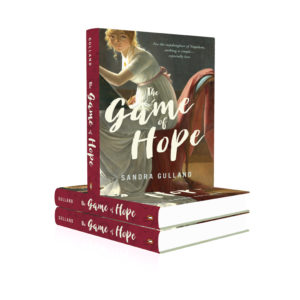
Also, on Fiverr.com, I found someone to turn the book cover of The Game of Hope into a 3D image (see above). For $5!
Easy Outreach with Tim Grahl
When it comes to marketing, I’m a fan of Tim Grahl, He’s experienced, down-to-earth and realistic. I’ve taken a few of his online courses, and they’ve always been worthwhile. Right now I’m following a new one he’s testing out, “Easy Outreach.” Basically, it’s about how to get interviewed on podcasts, but the detailed system he outlines would apply to any outreach: to blogs, vlogs, or podcasts, etc.
An important part of the process is to identify suitable podcasts and to study them before making a pitch. (I’ve discovered a number of wonderful podcasts in the process.) I’m kind of excited about putting this into practice. I ordered a USB Yeti mike, and already have one podcast interview scheduled for the fall.

I’m ready! Who knows where this might lead?
Finally learning Scrivener
I’ve promised myself that I would write The Next Novel on Scrivener. I’ve taken stabs at learning it before, but I’ve always ended up confused and frustrated. It’s a complex programme! I was on the verge of giving up when I came upon a Udemy Scrivener 3 course for Mac. It had excellent reviews so I went for it. It’s been fantastic. I have questions almost every day, and the teacher responds to every one. I take it bit by bit, and immediately apply what I’ve learned, so hopefully it will stick. I’m finally understanding why so many writers love it.
Additionally, I’ve been developing my next novel following the guidelines in Story Genius by Lisa Cron. Puzzling over how to get Cron’s scene card templates into my Scrivener project, I Googled “Story Genius Scrivener” and found a wonderful article by Gwen Hernandez on WriterUnboxed: Using Scrivener with Story Genius. Bingo! She even included a downloadable Scrivener template with scene card templates (and much more).
Watching movies, reading and listening to books and reading magazines …
And then, of course, there have been wonderful movies to watch: Three Billboards Outside Ebbing, Missouri; Call Me by Your Name; and, last night, Lady Bird. All were simply great. Of the three, I found Call Me by Your Name the most enchanting, swooningly European.
And then, of course, books, books, books! In addition to books on writing, I’m reading The Burning Girl by Claire Messud and listening, on Audible, to an amazing performance of The Hate U Give by Angie Thomas.
A hard life, eh?
SaveSave
SaveSave
SaveSave
SaveSave
SaveSave
SaveSave
SaveSave
SaveSave
SaveSave
SaveSave
SaveSave
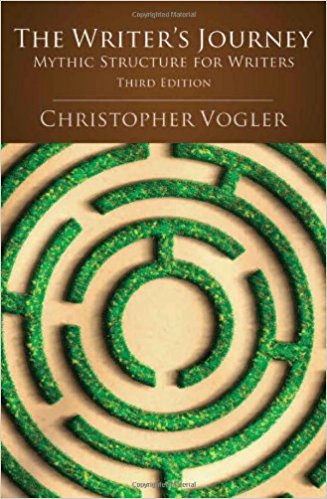
by Sandra Gulland | Mar 14, 2018 | Adventures of a Writing Life, On Character Development |
I promised in my last post on beginning a novel that I would write about creating characters.
Of course, to begin with, I have characters swarming, ideas both historical and fictional. I’ve already searched photo databanks for images that might fit. (Currently, I like using Unsplash for contemporary photos, largely because they tend to be more natural and have personality.)
These incendiary sparks are key, but at a certain point, I have to become analytical.
The first step: The Writer’s Journey
I begin this process by reviewing Part One of The Writer’s Journey; Mythic Structure for Writers, by Christopher Vogler. (This is a book on writing I highly recommend.)
I list the archetypes that traditionally most good stories need:
- Mentor
- Hero/Heroine
- Threshold Guardian(s)
- Herald
- Shapeshifter
- Ally (or Allies)
- Trickster
- Shadow(s)
And then I begin mulling over the characters in My Next Novel (working title, “Raptor Girl”). The roles can be combined into one character (i.e. Shadow and Shapeshifter). I know who my Heroine is, as well as my evil Shadow, and I’m fairly certain that the Mentor is my Heroine’s father. But looking at this list, I realized, Damn, I don’t have a Trickster! And I need one. I need someone to bring humor to this story.
So right now, at this point, I’m still mulling. But that doesn’t stop me from moving onto the next step.
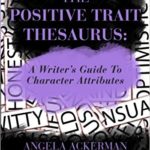
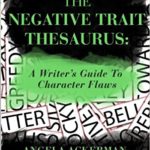

I love these thesauruses. There are more, and I’ve used them all at various stages of writing a novel. At this mulling-about-characters stage, they are a great way to brainstorm. It’s also a good way to identify where the confusions lie.
I immediately identified my heroine Molly as alert (she’s a falconer, after all), and I have a fairly good feel for her brothers and her mother, but her father and the villain remain just a little mysterious to me yet. And who the heck is the Trickster?
Is it the “Wild Woman”?
I’ve long been drawn to having a character I think of as “Wild Woman,” inspired by this amazing portrait:

This is “Lucrezia as Poetry” by Salvator Rosa. (An amazing portrait, don’t you think?) But where would she fit in? (Speak to me, Lucrezia!) Might she be a Trickster? Quite possibly. She might well also be a Shapeshifter or even a Mentor.
I’m still in the mulling stage, but it’s time to put together files for all of these characters, including their images, their roles in the story, their positive and negative traits, and (most important) emotional wounds.
And then, step three: the fun part
Once all this begins to congeal somewhat, I will assign sun signs (unless, of course, they are already historically known), and give some thought to where they all fall on an Enneagram chart: Perfectionist? Nurturer? Achiever? Romantic? Observer? Skeptic? Adventurer? Leader? Peacemaker?
I used Enneagram for my most recent novel (The Game of Hope) and Caroline Bonaparte, the Villain, was clearly a #8 (the Boss, Leader or Challenger, depending).
I’ve just bought Believable Characters; Creating with Enneagrams by Laurie Schnebly—so I can’t report on it yet—but there are a number of helpful articles on the Net:
Additionally, if you get hooked on all this—warning: it can become a tempting diversion—there is an online 10-week course available:
Final step: integration
The final challenge will be to pull all this information together and begin to form an integrated concept of each character, filling out the details of their lives, their health, their appearance, their eccentricities.
And then, of course, let them loose in your story!
SaveSave
SaveSave
SaveSave
SaveSaveSaveSave
SaveSave
SaveSave
SaveSave
SaveSave
SaveSave
SaveSave
SaveSave
SaveSave
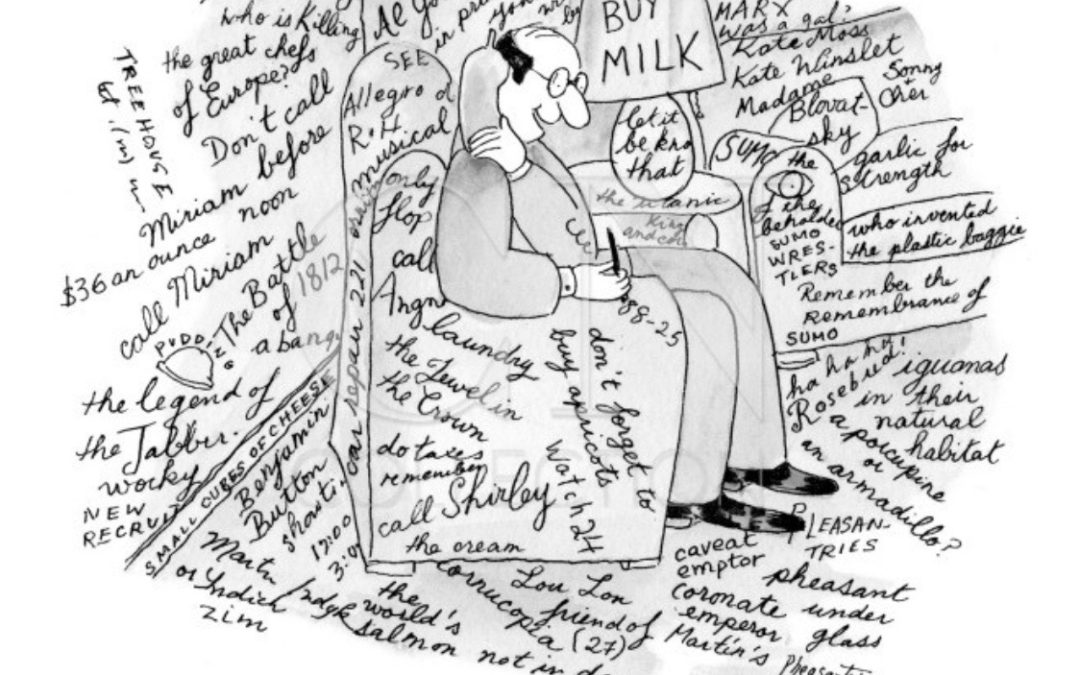
by Sandra Gulland | Jan 29, 2017 | Adventures of a Writing Life, Publication, Resources for Writers, The Writing Process |
Figuring out a novel’s “elevator pitch” — the summation of a story in a sentence or two — is invariably difficult for novelists, at least it is for me. My mind does not lend itself to reductions. I’m more of the expanding type. (Not an asset.) These 4 formulas — which I’ve gathered from hither and yon in decades of reading books on writing — are helpful in getting at the core of that unwieldy beast: a novel.
The 1-sentence formula
When _____ [OPENING CONFLICT]
happens to _____ [CHARACTER],
he/she has to _____ [OVERCOME CONFLICT]
in order to _____ [COMPLETE QUEST].
As applied to my next novel, The Game of Hope, I came up with:
Haunted by dreams of her dead father, a 15-year-old girl goes on a quest to find out if she was the cause of his death.
This is a tidy summary, but as with most one-sentence summaries, this doesn’t actually fit what actually happens in the novel.
The 3-sentence formula
_____ is about _____, who wants to _____.
The only problem is that _____.
As a result, he/she _____.
Yet, ultimately, he/she succeeds because _____.
One problem with this summary is that it gives too much away.
The 3-part book formula
1. The genre (i.e. “mystery novel”);
2. Parameters: what happens and what the reader getting into (“Seattle”, “a detective” “a dead boyfriend”);
3. Something left to the imagination (a dead body, a framed main character).
The Game of Hope is historical fiction for Young Adults. It’s about Josephine Bonaparte’s daughter Hortense, who hates her stepfather Napoleon and idolizes her dead father … until she finds out some unpleasant truths.
This is better, perhaps. It’s important to leave something unsaid, to tempt the reader.
The 5-part story formula
1. Character
2. Situation (What trouble that forces the character to act?)
3. Objective (The character’s goal.)
4. Opponent
5. Disaster (The awful thing that could happen.)
Make each of these elements specific.
Put them together to form two sentences.
Sentence 1: A statement that establishes character, situation, and objective.
Sentence 2: A statement—or question—that pinpoints the opponent and potential disaster.
Haunted by nightmares of her dead father, 15-year-old Hortense goes on a quest to find out if the father she idolizes is trying to tell her something. Was it her fault that he was executed? What she finds out is not at all what she expected, and more of this world than the next.
I think this is a better summary — but I don’t think I’ve nailed down the 5 elements yet.
And more …
I recently read Gotta Read It!: Five Simple Steps to a Fiction Pitch that Sells by Libbie Hawker (a book I recommend). She writes:
To construct a skeleton for your pitch, answer the following five questions as simply and blandly as you can: Who is your main character? What does she want? What stands in her way? What will she do, or what must she do, to achieve her goal? What is at stake if she fails?
Hawker’s book is about how to write a longer summation of your novel — one that might be used to send to a prospective agent, or be put on the jacket of your novel, on Amazon or in the publisher’s catalogue, for example. One begins with this short summary, the distillation of the novel, and then fleshes out “the skeleton” to represent the tone and subject of the novel truly.
The Game of Hope is soon to go into production, so it’s time for me to begin thinking how to frame the story, pitch it to readers. It’s never easy, but these guidelines help.
SaveSave
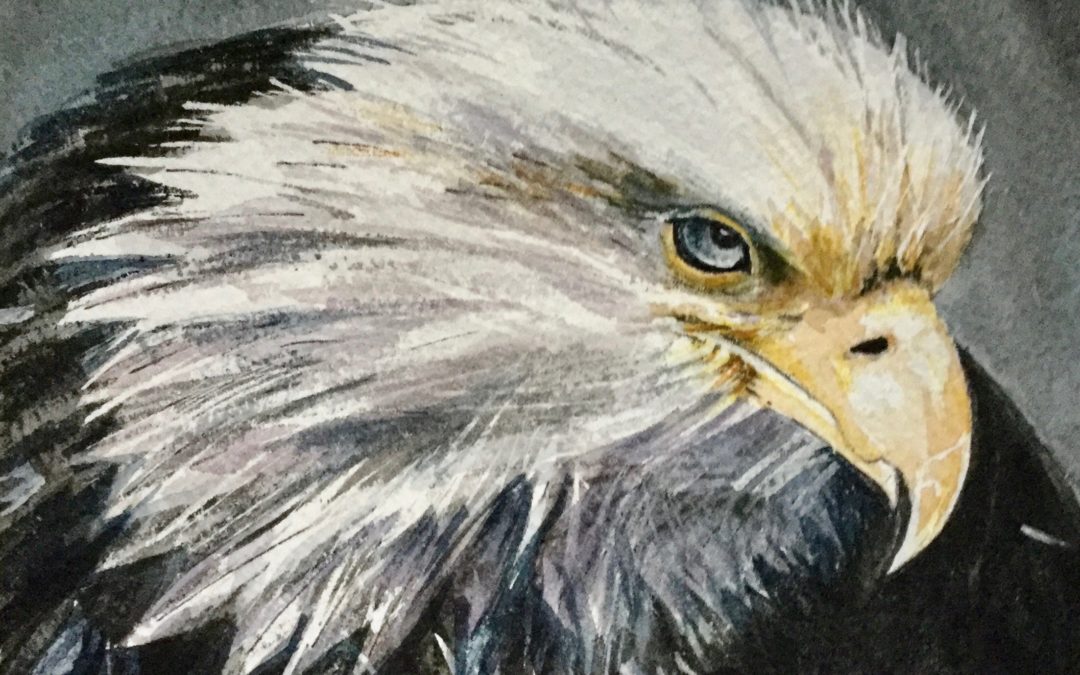
by Sandra Gulland | Jan 23, 2017 | Adventures of a Writing Life, Resources for Writers, The Writing Process |
The day before the Woman’s March
Election Day. The Man Who Shall Not Be Named was sworn in as President of the most powerful nation on Earth. Some were cheering. The majority were in depression.
Above is a watercolour I finished that day, titled, simply, “January 20, 2017.” I see the American eagle as somewhat worn, world-weary, and just a little disgusted.
The morning before the Women’s March
The morning of the Woman’s March, a friend on Facebook asked why women were marching. Perhaps, she suggested,
”… they would be better served by watching what ensues and then, if dissatisfied, work on finding a candidate who can better represent their goals.”
Here was part of my answer:
I doubt that anything will be accomplished, at least in the short-term, although it may get dialogue going and help the silent supporters know that there are others out there who feel as they do. That, in turn, may encourage them to speak out, write letters, campaign, run for office, etc.
Politicians understand that for every letter of protest there are a certain number who agree, but didn’t write. I imagine that the same calculation applies to a march. A massive turn-out should make an impression.
Seeing that there are so many coming out in visible support of women’s issues may, for one thing, encourage women to run for office, and for those in office to reconsider their agenda.
The more practical actions are preferable, I agree, but it isn’t a do this OR do that situation. Many do “all of the above.”
The March itself
The Woman’s March was a beautiful experience here in San Miguel de Allende, Mexico. Hundreds (500? 700?) showed up, both men and women.

Gathering for the Women’s March in San Miguel de Allende, Mexico
Before I headed out to join friends there, I’d seen the news of massive turn-outs. By the time I returned home, the astonishing numbers were coming in.

The Woman’s March in New York City.
By the end of the day, it was said by credible sources that three million protested in the US alone! Even conservative small towns had significant numbers in their Marches. The Man Who Shall Not Be Named tweeted “Why didn’t they vote?” Perhaps he simply forgot that three million more people voted for The Woman Who Will Not Be Forgotten than voted for him.
Lo siento. I sound bitter. In fact, I am still a little blissed-out having been part of the largest demonstration in history. Click this New York Times coverage to get a sense of the crowds.
The morning after the Woman’s March
So, what was accomplished? I believe that in fact the Woman’s March of 2017 may have accomplished a great deal. Politicians who care about the public will have noted the turnout, and (hopefully) will give some thought to how they might vote on women’s issues. Opposition to The Man Who Shall Not Be Named was unified, energized by the experience. Some who had never made their views public before will now become active.
I leave you with two Tweets:
And this one:
In closing, a word about writing and books :-)
Lest you fear that this blog has been hijacked by political concerns, I should note that I am reading Do Not Say We Have Nothing by Madeline Thien — a well-lauded novel on the Chinese Revolution by a Canadian author. (So yes — sigh — politics.)
Also, I sent the last draft of my YA novel to my editor. It’s with teen beta readers and consultants now.
And so: a rest? Not exactly! We’re moving into our new house in San Miguel de Allende a week today.
SaveSave

by Sandra Gulland | Jan 14, 2017 | Adventures of a Writing Life, Resources for Writers, The Shadow Queen, The Writing Process |
{Lovely San Miguel de Allende, where I am right now. A photo by Leah Feldon, it is similar to the view from my writing room.}
Yesterday was a big day for me: I woke at 4:00am, and shortly before 8:00am I emailed my manuscript to my editor and agent. It was Friday 13. I am not superstitious, but that did give me pause.
Some writers are able to write a perfectly good novel in two or three drafts. I am not one of those writers! It takes me years (and years) to uncover the complexities, the depths and the “fall line” of a story. My revision process is extremely slow, in spite of all the techniques I use (i.e. plotting) to try to speed it up. I do hope I’m getting closer.
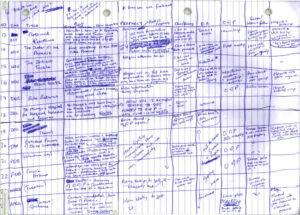
J.K. Rowling’s plot guideline. No doubt it helped!
Moonsick (working title) is my novel for Young Adults, a story based on the teen years of Josephine Bonaparte’s daughter Hortense. Is the novel too giddy? Too dark? I’m frankly not sure. This is why beta readers — teen beta readers — will be important to my final revision process.
Teen beta readers wanted
Later that same day I sent out a newsletter that included a call for teen beta readers. I now have three readers, and (I hope) more to come. I’d also like to find a book club that reads YA fiction — not exclusively, but often enough that they are comfortable with the genre. It occurs to me that a high school English class might be interested in reading it (although it really is a novel for girls). Let me know if you have a teen reader or a book club or class to suggest.
Going back to where it all began
Looking for reader guidelines I’ve used in the past, I discovered a blog post I wrote in February of 2012 — five years ago! — announcing that I would be writing a YA novel about Hortense.
Hortense as a teen — the subject of my next-next novel (Surprise!)
(Note that This Bright Darkness, mentioned in the post, was the working title of The Shadow Queen, which was published two years later, in the spring of 2014.)

Lovely Hortense as a teen. Energetic, creative, talented — a bright spark.
SaveSave
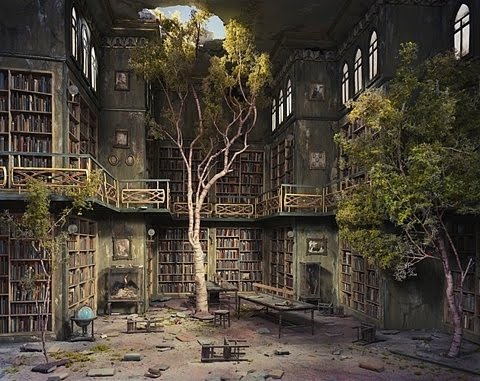
by Sandra Gulland | Dec 26, 2016 | Adventures of a Writing Life, Resources for Readers, Resources for Writers, The Writing Process |
Where have I been?
I’ve been MIA here … why? Partly it had to do with a big change to my website, which threw me off. I couldn’t quite figure out how to navigate it, and various visuals I used before were suddenly missing. I was, as they say “all 6s and 7s” (an expression I love).
Also, I’ve been struggling to finish Moonsick, the working title of the Young Adult historical novel I’ve been writing. For years. The final stages are always the most intense.
Why is it always like this for me? Even now, in the 8th draft, I sometimes feel I’m just scratching the surface of this story.
The return to Real Life
But enough of my whining! It’s Boxing Day, our lovely Christmas holiday is behind us. I’ve played with my new toys, and now it’s time to begin to get back on track. Real Life.
My plan, now, is to go through the manuscript, copy out all the scenes that pertain to Napoleon and paste them into another file. Napoleon’s relationship with his stepdaughter Hortense is key to this novel, and I need to make sure that there is a clear arc. It’s a time-consuming approach, but I used it analyzing the arc of Hortense’s relationship with her music teacher (another important thread), and I was glad I did.
And so, onto Napoleon …
From the good book department
I recently read, and loved:
Commonwealth, by Ann Patchett
Tell Me Three Things, by Julie Buxbaum
The Girls, by Emma Cline
Each of these novels kept me up reading too late into the night. Highly recommended.
Who knows? I might even post again before the New Year, but if I don’t, have a Happy New Year!



















